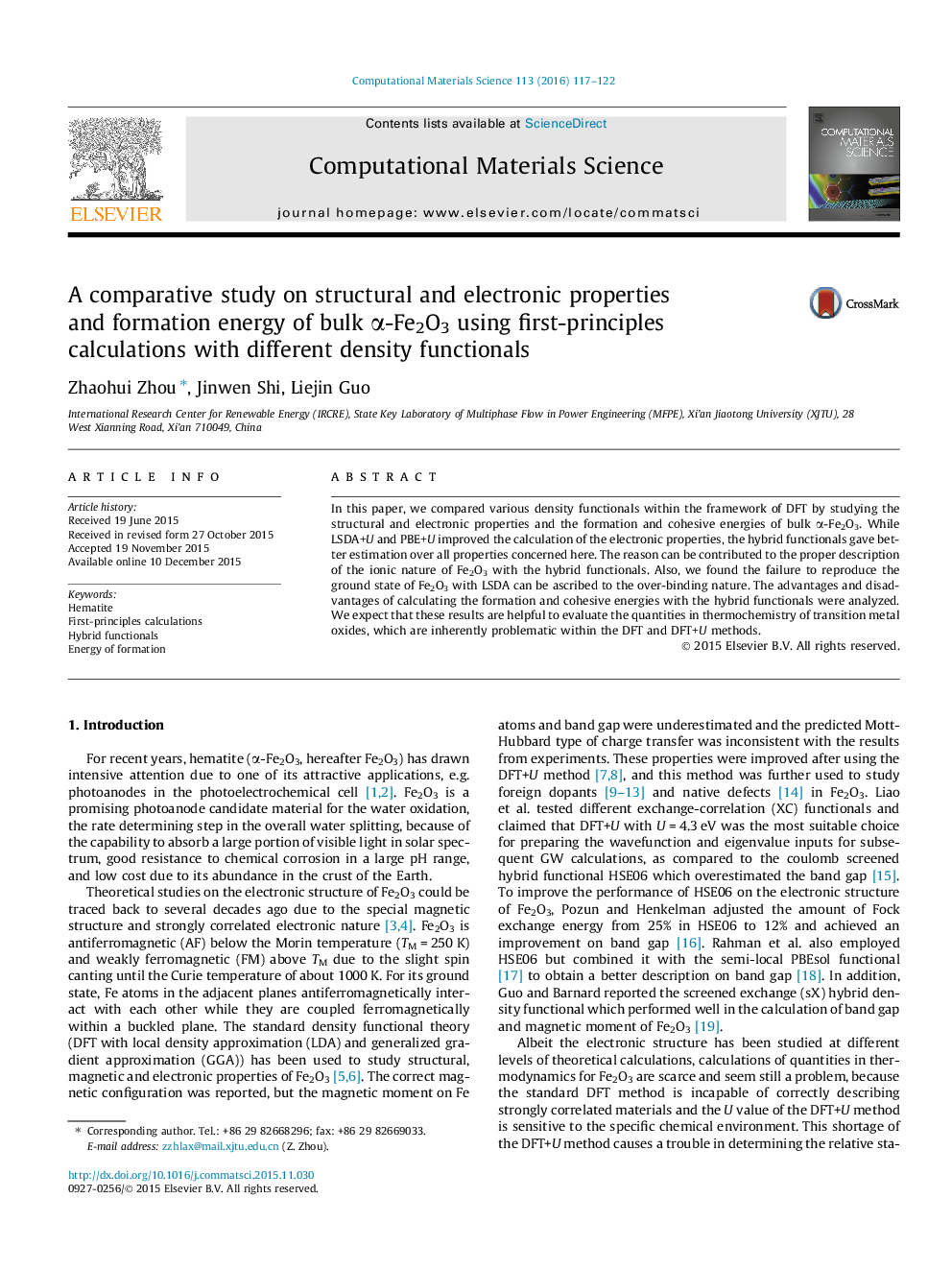| Article ID | Journal | Published Year | Pages | File Type |
|---|---|---|---|---|
| 1560025 | Computational Materials Science | 2016 | 6 Pages |
Abstract
In this paper, we compared various density functionals within the framework of DFT by studying the structural and electronic properties and the formation and cohesive energies of bulk α-Fe2O3. While LSDA+U and PBE+U improved the calculation of the electronic properties, the hybrid functionals gave better estimation over all properties concerned here. The reason can be contributed to the proper description of the ionic nature of Fe2O3 with the hybrid functionals. Also, we found the failure to reproduce the ground state of Fe2O3 with LSDA can be ascribed to the over-binding nature. The advantages and disadvantages of calculating the formation and cohesive energies with the hybrid functionals were analyzed. We expect that these results are helpful to evaluate the quantities in thermochemistry of transition metal oxides, which are inherently problematic within the DFT and DFT+U methods.
Related Topics
Physical Sciences and Engineering
Engineering
Computational Mechanics
Authors
Zhaohui Zhou, Jinwen Shi, Liejin Guo,
